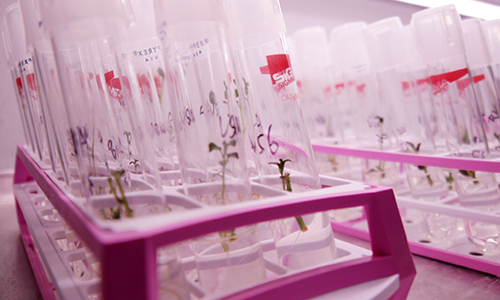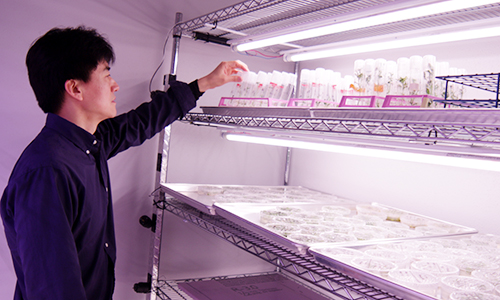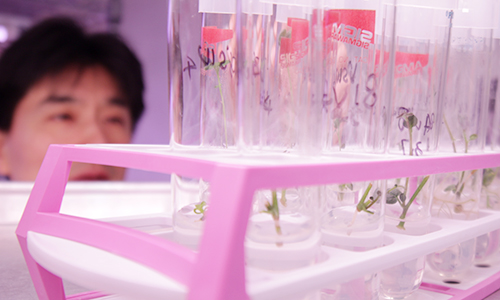
Plant Immunity Research
Innovation through investigation of plant perceptions and responses to microbial pathogens
A multipronged approach to plant response
The plant biotic stress research laboratory at the Texas A&M AgriLife Research and Extension Center at Dallas is uniquely focused on how plants perceive and respond to microbial pathogens by combining molecular, genetic, biochemical, genomic and proteomic approaches.
Our long-term research goal is to understand the complex network of signal transduction and pathway interactions in plant immunity.
The knowledge generated from these studies will contribute to a better understanding of microbial pathogenesis and host defense responses, which should ultimately lead to the development of novel disease control strategies and improved crop production.
Research projects

The functional interplay between DNA damage repair and plant immunity
The plant immune and DNA damage responses are two ancient fundamental surveillance mechanisms. Although both responses have been well characterized separately, the relationship between them is largely unknown. Dr. Song’s group and others have identified multiple DNA damage proteins that play a key role in plant immune response. The laboratory’s future research will continue to investigate how DNA damage proteins regulate plant immune response and how the two responses are intricately interconnected.

The molecular basis of how poly(ADP-ribosyl)ation regulates immune and stress responses
Poly(ADP-ribosyl)ation is a posttranslational modification of nuclear proteins catalyzed by poly(ADP-ribose) polymerase (PARP) and plays a role in nearly all major cellular processes, including DNA repair, transcription, translation, chromatin remodeling, metabolic regulation and cell death. Recent findings indicate that poly(ADP-ribosyl)ation is an important component of plant immunity and is a dynamic process that is tightly controlled and fine-tuned. A core component of our research program will identify the mechanisms through which poly(ADP-ribosyl)ation regulates plant immune and stress responses and discover new components and pathways with functional roles in plant immunity, in particular by identifying PARP targets and associated proteins and investigating the functional interplay of PARPs with their interactors. Future studies will investigate how PARPs mutually modulate the expression of each other and elucidate the molecular mechanism by which PARPs and PARGs regulate various cellular responses, individually or in a concerted manner.

The molecular mechanism of plant-fungus/oomycete interactions
Fungal and oomycete pathogens are responsible for many devastating diseases in plants. For example, Phytophthora infestans is a destructive oomycete pathogen best known for causing Irish Potato Famine and remains the most costly potato pathogen to control worldwide. Two notorious fungal pathogens, Rhizoctonia solani and Sclerotinia homoeocarpa, cause large patch and dollar spot in turfgrass, respectively. Genome sequence analyses of these pathogens have identified an array of effector proteins that are translocated into host cells to establish infection. The pathogenic mechanisms of the majority of these secreted effectors remain unknown. The aim of his research is to identify the virulence targets and mode of action of these effectors. Increased understanding of the molecular basis of plant-pathogens interactions will facilitate development of sustainable management strategies against these destructive fungal and oomycete pathogens in crops.
Program Faculty and Staff

Junqi Song, Ph.D.
Associate Professor, Principal Investigator
972.952.9244
Publications
A full selection of Dr. Song’s publications is available at TAMU Scholars along with information about researchers and peer-reviewed publications across The Texas A&M University System.

Jinping Zhao, Ph.D.
Assistant Research Scientist

Alex Uszynski
Student Worker

Shakil Hosain
Graduate Student
